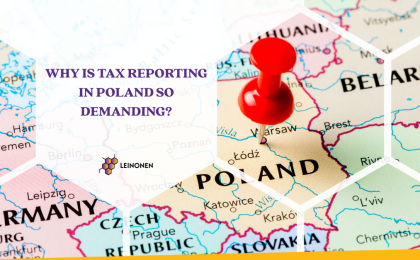The President of Poland has officially signed the amendment to the VAT Act, confirming that the National e-Invoicing System (KSeF) will become mandatory in 2026.
This marks the beginning of KSeF 2.0, a major transformation in the invoicing process across Poland.
Key Dates and Requirements
- From February 1, 2026, all Polish entrepreneurs—regardless of business type or VAT status—will be required to issue and receive invoices exclusively in a structured format (XML) via KSeF.
- Large enterprises (with gross sales exceeding PLN 200 million in 2024) must comply starting February 1, 2026.
- All other entities will be required to comply from April 1, 2026.
- Until then, businesses may voluntarily use KSeF or continue with traditional invoicing methods (e.g., paper or PDF).
Please note: Readiness by February 2026 is essential, as failure to comply will prevent you from receiving purchase invoices. Once an invoice is sent to KSeF, it is considered delivered—no separate notification or acceptance is required.
What KSeF Covers—and What It Doesn’t
KSeF applies only to invoices. The following documents remain outside the system:
- Attachments (PDF, Word, Excel, etc.) such as protocols, statements, specifications, CRM data
(Note: These will be embedded in the XML structure under a special node called “Zalacznik” rather than sent as separate files.) - Fiscal receipts
- Debit/Credit notes
- Pro-forma invoices
- Internal documents (including internal invoices)
- Invoices from foreign entities
- Invoices issued to consumers (non-business individuals)
What This Means for Your Business
Implementing KSeF is not just an IT upgrade—it requires a comprehensive review and adjustment of your business processes. Failure to comply may result in invoices being deemed invalid, exposing your company to financial and tax-related risks.
You are required to:
- Adapt your accounting software to meet KSeF standards
Leinonen is responsible for updating the Enova system for sending sales invoices and configuring Saldeo to retrieve purchase invoices from KSeF. - Update internal procedures for issuing and receiving invoices
- Revise cooperation rules with business partners
- Update collaboration protocols with our Office, including document exchange and archiving processes
Next Steps
To use KSeF, each company representative must have either a trusted profile (Profil Zaufany) or a Polish certified electronic signature.
Additionally, you must register a main user (administrator) via the ZAW-FA form, who will be authorized to manage access rights within KSeF.
We will soon reach out with a proposal to update our current agreement to ensure our cooperation aligns with KSeF requirements.
For more information, please visit the Ministry of Finance’s official website: https://ksef.podatki.gov.pl/
Summary: KSeF Implementation and Procedures
1. ZAW-FA Form and KSeF Master
- The ZAW-FA notification is used to appoint the first person (KSeF Master) authorized to use KSeF for a legal entity.
- The KSeF Master manages permissions for other users within the entity.
- The ZAW-FA form is submitted in paper form to the tax office; some offices accept electronic submission.
- Proper documentation and procedures for managing permissions are required.
2. Foreign Companies and KSeF
- Foreign entities (outside Poland) continue to issue and send invoices as before, outside KSeF.
- Polish companies must issue e-invoices in KSeF for sales to foreign contractors (B2B), regardless of the recipient’s location.
- Sending an invoice to KSeF does not mean the foreign contractor has received it; a visualization (e.g., PDF with QR code) must be delivered separately.
- Delivery arrangements can be informal (email, website, terms and conditions).
3. Attachments and Supporting Documentation
- KSeF is only for VAT invoices; other documents (bills, receipts, contracts, attachments) are not handled by KSeF.
- Non-invoice documents continue to circulate as before (paper or electronic).
- Attachments to invoices must be sent outside KSeF, but can be supplemented with the KSeF invoice number (KSeF ID).
- Visualization (readable invoice with QR code) confirms the invoice is in KSeF.
4. When to Issue an Invoice in KSeF
KSeF does not change the deadlines for issuing invoices or the rules for identifying the moment of performance.
- The process of issuing invoices changes: invoices must be in electronic format (XML) and submitted to KSeF.
- Exception: invoices to consumers (non-business individuals) are not required in KSeF.
- All other invoices to entities with a NIP must be issued in KSeF, regardless of transaction type.
- Invoices must be submitted to KSeF on the same date as the invoice date, or no later than 24 hours after.





